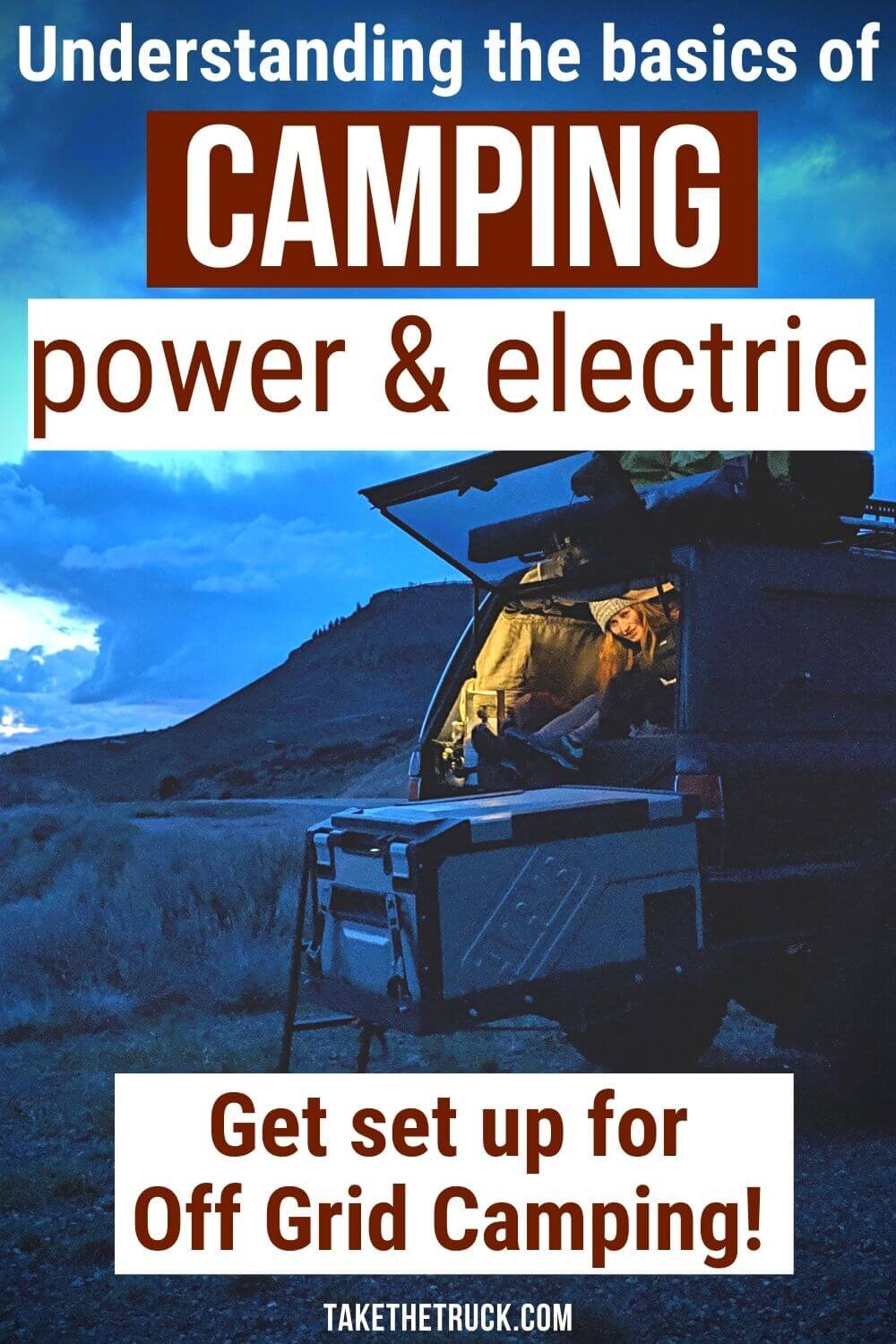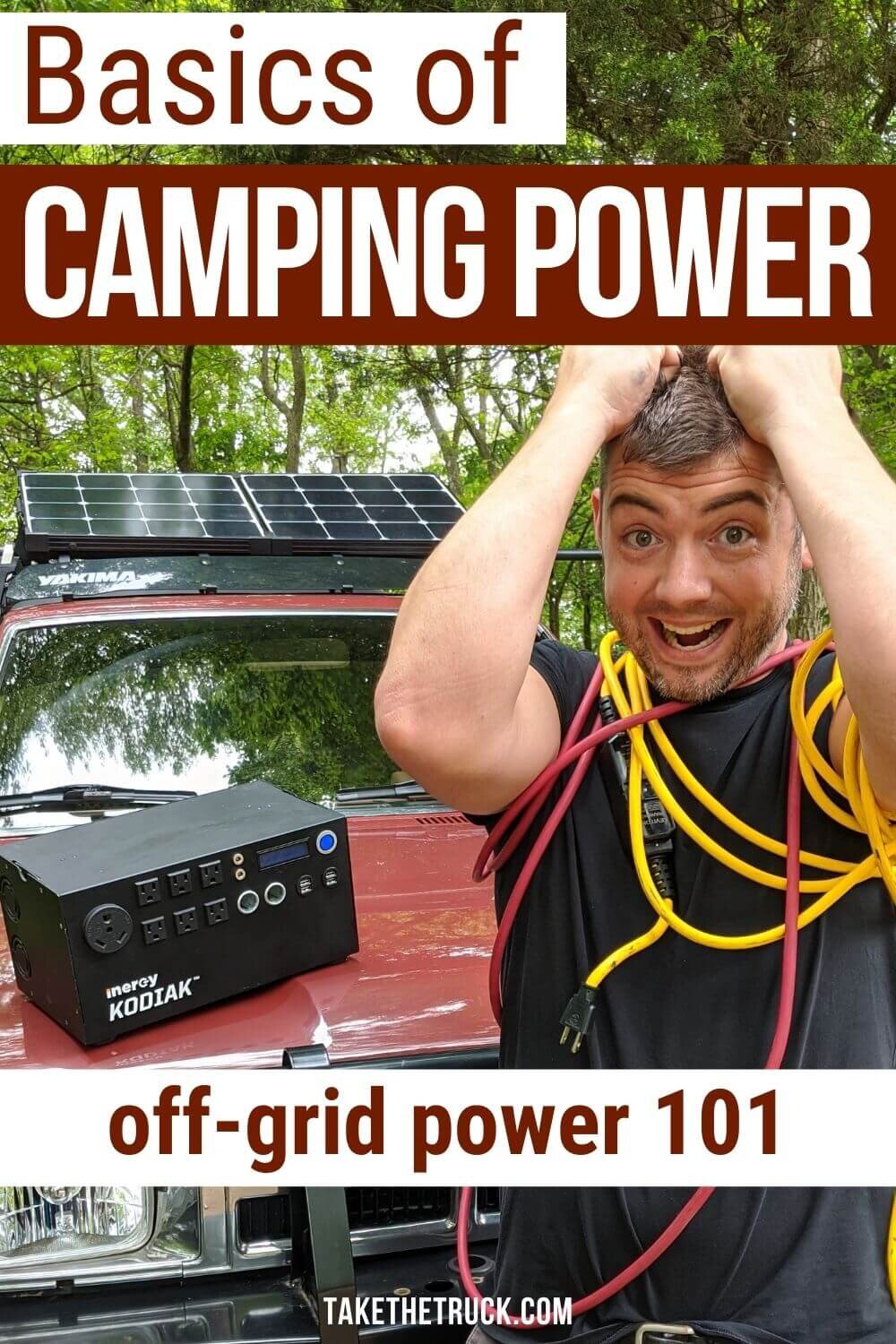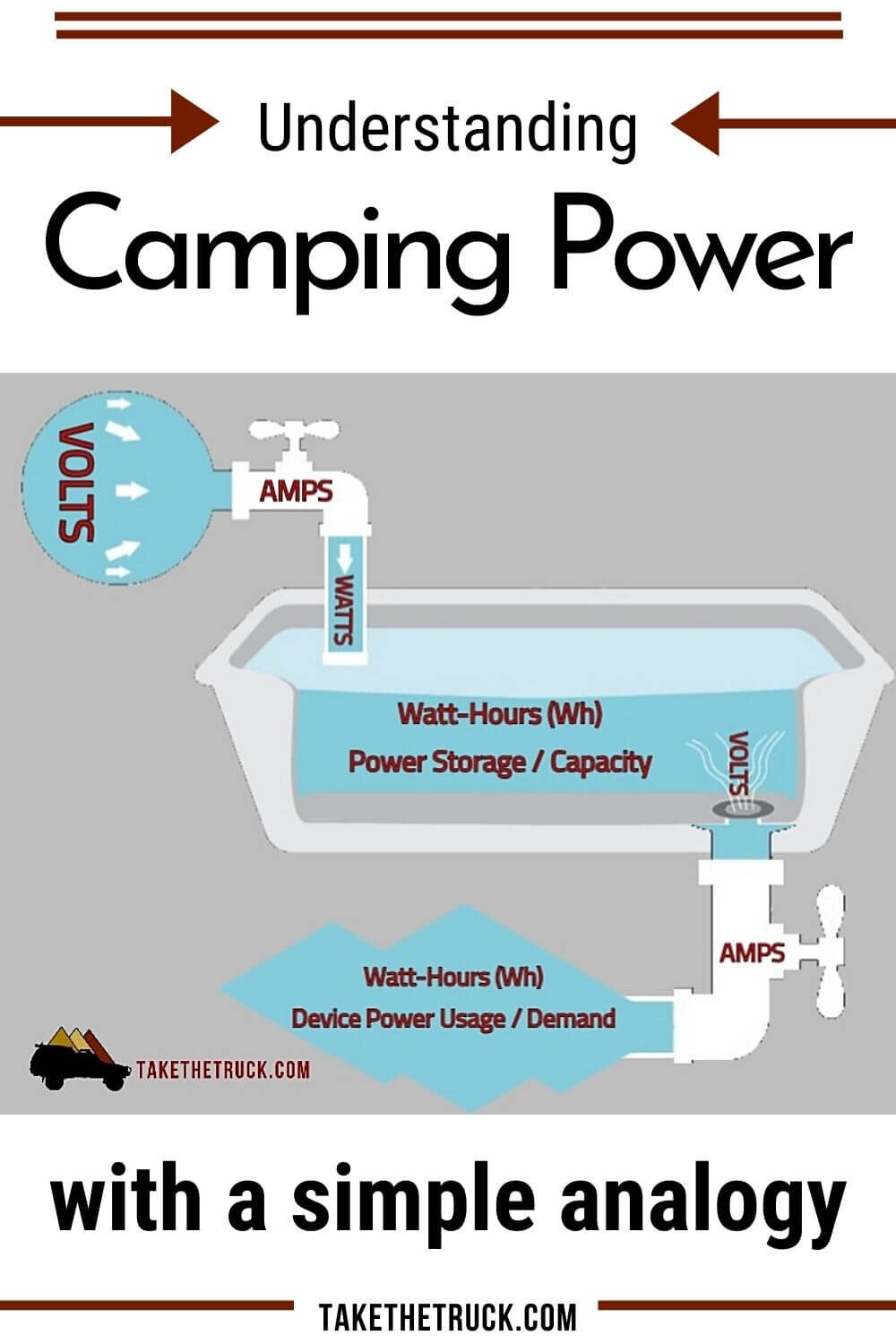Portable Camping Power Part 1 - Electrical Terms and Principles Made Simple
Before we get into determining your camping power needs, or discuss different camping power supply options, the first thing you’ll want is a good grasp of some basic electrical terms that you’ll need to make an informed camping power decision.
And once you’re done with this post, follow the links below for more posts related to choosing the best camping power supply for you.
Alternating Current vs Direct Current
You’ll hear the terms Alternating Current and Direct Current used frequently when looking at camping power supplies and devices such as solar generators, solar panels, inverters, dual-battery setups, etc.
Alternating Current (AC)
Alternating Current (AC) is the type of power used to power devices in homes and businesses. It’s the type of power that runs through power lines all over the world because it travels more efficiently over long distances, and it “flows” in alternating directions (hence the name). So when you plug in a blender, toaster, microwave, or refrigerator at home odds are it’s running on AC power.
In the U.S., most common household appliances operate on 110 Volt AC power
Direct Current (DC)
Direct Current (DC) is the type of power used in vehicles, batteries, and small electronics like laptops, cell phones, GPS devices, etc. It “flows” in only one direction.
In the U.S., most common vehicle charging systems, batteries, and digital electronics operate on 12 Volt DC power
Making Sense of Amps, Volts, and Watts
To make sense of amps, volts, and watts, we’re going to use the old plumbing analogy. So stick with us for a minute...
If Electricity were the water flowing through the pipes in your house, Volts would be the pressure forcing the water through the pipes and Amps would be the speed at which the water is able to flow through them. While Watts would be a measurement of the amount gushing out when you turn on the faucet to fill your bathtub.
Volts x Amps = Watts
This is the most fundamental equation you’ll want to commit to memory when assessing your camping power needs.
So what are Amp-hours (Ah) and Watt-hours (Wh)?
Amp-hours and Watt-hours are both terms used to measure the amount of power something - like a battery - can store and for how long something can use that energy in a given amount of time.
So working with the same plumbing analogy, Amp-hours and Watt-hours could describe the amount of water your bathtub can hold.
Now let’s get into how the terms are different.
Amp-hours
Amp-hours (Ah) are typically used in quantifying the capacity of vehicle starting batteries, or deep-cycle batteries used in traditional dual-battery setups that power RVs, camper vans, truck campers, etc.
Camping Power Example (Using Ah):
If I have an LED light bulb that I know draws 0.5 Amps and I use it for 1 hour it has consumed 0.5 Amp-hours (or 0.5 Ah) of power.
Now if I have a 12 Volt battery that stores 50 Amp-hours of usable electricity before it’s dead, I know I can power my 0.5 Amp light bulb for a total of 100 hours (50ah divided by 0.5amps) before my battery is dead. This measurement is dependent on the assumption that the battery and the light bulb both operate at the same voltage (and we’ll show you how to determine this in Part Two of our Camping Power series.)
Watt-hours
Watt-hours (Wh) are used to quantify the power storage of solar generators, lithium-Ion battery banks, and watts are used to measure the output of solar panels and power inverters. Overall, Watt-hours are a more uniform way to measure your camping power needs because a watt-hour is the same quantity of energy regardless of voltage. Confused? Let’s break it down:
If I have a 12 Volt Battery with a 50ah capacity, using our Amps X Volts = Watts equation
50ah X 12v = 600 watts of power
Now if I have a 6 Volt Battery with a 50ah capacity, using our Amps X Volts = Watts equation we have
50ah X 6v = 300 watts of power
So, even though both batteries have the same Amp-hour capacity, because they operate at a different Voltage the amount of power they can supply (watts) is different.
Camping Power Example (Using Wh):
If I have a LED light bulb that I know draws 6 Watts [I know this because either it flat out states it on the manufacturer's label, or the label states that it draws 0.5amps at 12V DC, and 0.5amp X 12v = 6 watts] - and then if I use it for 1 hour, it has consumed 6 Watt-hours (or 6 Wh) of my battery’s capacity.
This Watt-hour measurement is now comparable with the power consumption of all other devices I power from my camping power supply regardless of the voltage they operate at.
Camping Power: Putting It All Together
Now let's look at the whole camping power system with these terms in use:
In the above illustration, our 600 watt-hour battery (symbolized by the bathtub) is being charged (or filled) with 5 amps of power at 12 volts, equaling 60 watts per hour - lets say this is a solar panel we set up to charge the battery.
So if our 600wh battery were empty, it would take 10 hours at this rate of charge to fill it.
Then you can see we’re also draining our battery (symbolized by the drain in the bathtub) of 0.5 amps of power at 12 volts equaling 6 watts per hour - let’s say this is us using our LED light bulb we discussed previously. So if our battery were full - and there was no more power charging it - we could run our LED light for 100 hours before our batter was dead (or the “tub was drained”).
So armed with a firm grasp and good understanding of these camping power terms and principles, you’re ready to start the next step: determining your camping power supply needs!
Please SUBSCRIBE for posts to be sent to your inbox, and if you have any questions, please drop a comment below - we’d love to help!
And as always, thanks for reading!
Related Posts:
Pin me for later!
We’d appreciate a share! Thanks so much!








